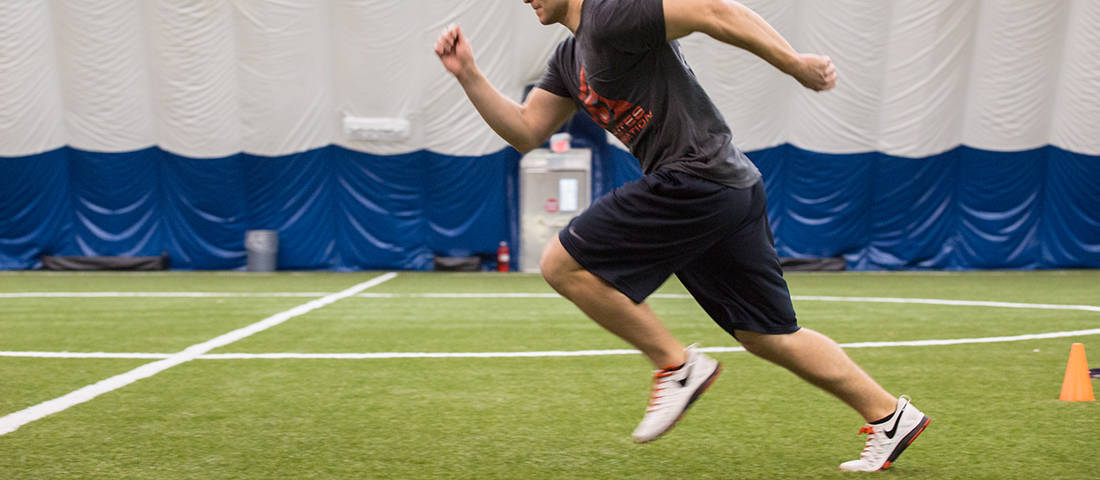When coaches evaluate sprinting mechanics, what should they look for?
Here is a simple template to use when working with multi-directional sport athletes during sprinting. When working with sprinters in track, because this is the track athletes’ skill, be more particular. They don’t decelerate or change direction. They need to maximize linear speed only.
Tips to Evaluate Sprinting:
- Keep in mind the outline is for sprinting NOT acceleration.
- Do the arms cross the body and elbows flare out to the sides?
- Do the hands come up to roughly the chin/cheeks and pass by the hips 4-8 inches.
- Are the shoulders bouncing and or tight?
- Is the head and eyes up? Is the chin down (not sticking out)?
- Does the knee drive forward and not cross the mid-line?
- Does the foot recover to the level of the support knee?
- Is the back overly arched?
- Do the feet rotate outward and do the shins abduct out (flare out).
- Do the feet slap the ground?
- Does the foot cross the midline during plant?
- Is the knee drive low?
- Is the runner over-striding.
- Does the runner extend the hips and run tall?
You can be more detailed with other body part positions, such as asymmetrical running (one leg cycles differently than the other or one arm swings longer or rotates more than the other). But, if you can master the top details, then you can improve running form significantly.
If the above components of running can be improved, then the focus can turn more to the speed at which the athletes runs. Improve strength and power. Make them more efficient at the gait cycle. Improve turnover.
When evaluating sprinting, if you have a video camera and can slow down the footage, then you can better evaluate running form. However, if you do not, then you can have the athletes perform several reps and you focus on a particular area of the body each time.
Finally, the biggest mistake when coaches evaluate sprinting is trying to fix all of athlete’s issues at once. There may be mobility and flexibility issues as well as poor motor programming that will take time to correct. Be patient and congratulate the athletes when each area they improve.
